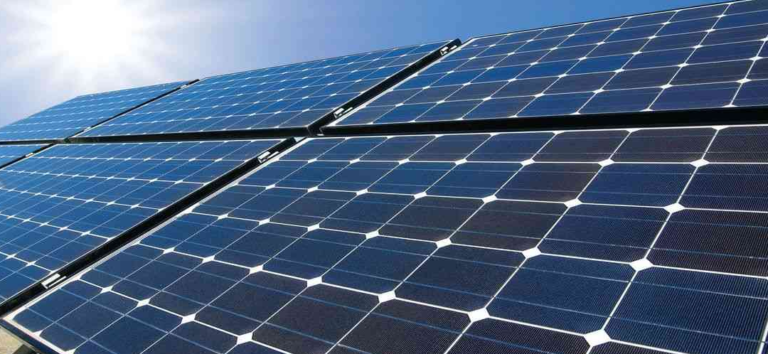Fracking, or hydraulic fracturing, is a drilling technique used to extract oil and natural gas from deep underground. It involves injecting high-pressure fluid into a wellbore to create cracks in deep-rock formations, allowing trapped gas and oil to flow more freely. This method is primarily used by energy companies to access previously unreachable fossil fuel reserves.
- Main Benefit: Increases domestic oil and gas production, reducing dependence on foreign energy sources
- Primary Concern: Potential environmental impacts, including water contamination and increased seismic activity
- Best For: Countries with large shale gas and oil reserves seeking energy independence
- Important Note: Fracking's long-term environmental and health effects are still being studied and debated
Fracking: Weighing the Benefits and Drawbacks
This table outlines 30 pros and 30 cons of fracking, covering economic, environmental, and social aspects to provide a comprehensive overview of this controversial energy extraction method.
| Pros | Cons |
|---|---|
| Increases domestic energy production | Potential groundwater contamination |
| Reduces dependence on foreign oil | High water consumption |
| Creates jobs in energy sector | Methane emissions contribute to climate change |
| Lowers natural gas prices | Noise pollution from drilling operations |
| Boosts local economies in fracking regions | Increased seismic activity in fracking areas |
| Provides bridge fuel towards renewable energy | Chemical exposure risks for workers and residents |
| Improves energy independence | Wastewater disposal challenges |
| Advances in drilling technology | Air pollution from fracking operations |
| Accesses previously unreachable reserves | Potential property value decrease near fracking sites |
| Reduces CO2 emissions compared to coal | Disruption of wildlife habitats |
| Increases government revenue through taxes | Road damage from increased truck traffic |
| Supports manufacturing with lower energy costs | Potential for accidents and spills |
| Enhances geopolitical influence | Lack of transparency in fracking fluid composition |
| Stimulates innovation in energy sector | Competes with renewable energy investments |
| Improves trade balance by reducing imports | Long-term environmental impacts unknown |
| Provides stable energy source for planning | Potential for surface water contamination |
| Supports rural development | Increased strain on local infrastructure |
| Enhances energy market dynamics | Potential health risks for nearby communities |
| Reduces energy costs for consumers | Loss of agricultural land |
| Encourages public-private partnerships | Aesthetic impact on landscapes |
| Improves efficiency of oil and gas extraction | Potential for radioactive contamination |
| Supports national energy security | Contributes to water scarcity in dry regions |
| Enables quick response to energy demand changes | Social disruption in small communities |
| Reduces reliance on coal power plants | Potential for long-term soil contamination |
| Stimulates economic growth in related industries | Increases regulatory challenges for governments |
| Provides feedstock for petrochemical industry | Light pollution from 24/7 operations |
| Enhances energy grid stability | Potential for pipeline leaks and explosions |
| Supports development of new energy technologies | Contributes to boom-bust economic cycles |
| Reduces energy poverty in developing regions | Potential for induced seismicity from wastewater injection |
| Improves energy efficiency in extraction process | Concerns about long-term well integrity |
Citations:
- 1. https://www.investopedia.com/terms/f/fracking.asp
- 2. https://www.brookings.edu/articles/the-economic-benefits-of-fracking/
- 3. https://www.britannica.com/procon/fracking-debate
- 4. https://en.wikipedia.org/wiki/Environmental_impact_of_fracking
- 5. https://www.investopedia.com/ask/answers/011915/what-are-effects-fracking-environment.asp
Fracking Industry Statistics
This table provides key statistics and market data on the hydraulic fracturing (fracking) industry, including production volumes, economic impact, and growth projections.
| Statistical Analysis & Market Data | |
|---|---|
| Global hydraulic fracturing market size (2023) | $33.61 billion |
| Projected market size by 2030 | $55.99 billion |
| Compound Annual Growth Rate (CAGR) 2023-2030 | 6.59% |
| U.S. natural gas production from fracking (2022) | 79% of total production |
| U.S. crude oil production from fracking (2022) | 95% of total production |
| Number of active fracking wells in the U.S. (2022) | Over 1.7 million |
| Average water usage per fracked well | 1.5 million to 16 million gallons |
| U.S. jobs supported by fracking industry (2022) | Approximately 2.8 million |
| Reduction in U.S. CO2 emissions due to natural gas (2005-2019) | About 3.3 billion metric tons |
| Estimated U.S. shale gas reserves | Over 200 trillion cubic feet |
Fracking Technical Specifications
This table outlines the key technical aspects and requirements of hydraulic fracturing operations, including drilling techniques, equipment, and environmental considerations.
| Technical Specifications & Requirements | |
|---|---|
| Typical well depth | 6,000 to 10,000 feet |
| Horizontal drilling length | 1 to 2 miles |
| Fracking fluid composition | 90% water, 9.5% sand, 0.5% chemicals |
| Pressure required for fracturing | 5,000 to 20,000 psi |
| Number of stages per well | 20 to 40 on average |
| Duration of fracking operation | 3 to 5 days per well |
| Well casing requirements | Multiple layers of steel casing and cement |
| Seismic monitoring equipment | Required to detect induced seismicity |
| Wastewater management | On-site treatment or deep well injection |
| Air quality monitoring | Continuous monitoring for methane leaks |
Economic Impact of Fracking
This table presents a cost and value analysis of hydraulic fracturing, including its economic benefits, operational costs, and potential financial risks.
| Cost & Value Analysis | |
|---|---|
| Average cost per fracked well | $5 million to $8 million |
| U.S. GDP contribution (2022) | $454 billion |
| Annual household energy cost savings | $740 on average |
| Job creation per well | Approximately 120 jobs |
| Royalties paid to landowners (2022) | Over $30 billion |
| Tax revenue generated for local governments | $38 billion annually |
| Reduction in U.S. trade deficit (2022) | $200 billion |
| Average well production decline rate | 70-90% in first 3 years |
| Environmental remediation costs per well | $75,000 to $250,000 |
| Potential litigation costs for companies | Millions in settlements and legal fees |
Fracking vs. Conventional Oil & Gas Extraction
This table compares hydraulic fracturing with conventional oil and gas extraction methods, highlighting the advantages and disadvantages of each approach.
| Comparative Analysis & Alternatives | |
|---|---|
| Initial production rates | Fracking: Higher; Conventional: Lower |
| Production decline rates | Fracking: Steeper; Conventional: Gradual |
| Well lifespan | Fracking: 5-10 years; Conventional: 20-30 years |
| Environmental impact | Fracking: Higher water use; Conventional: Lower water use |
| Land footprint | Fracking: Smaller; Conventional: Larger |
| Geological applicability | Fracking: Shale formations; Conventional: Porous rock |
| Initial investment costs | Fracking: Higher; Conventional: Lower |
| Operational complexity | Fracking: More complex; Conventional: Less complex |
| Energy return on investment | Fracking: Lower; Conventional: Higher |
| Greenhouse gas emissions | Fracking: Higher methane risk; Conventional: Lower methane risk |
Future Outlook for Fracking
This table outlines projected trends and developments in the hydraulic fracturing industry, including technological advancements, regulatory changes, and market shifts.
| Future Outlook & Industry Trends | |
|---|---|
| Technological advancements | AI-driven drilling optimization and real-time monitoring |
| Environmental innovations | Waterless fracking and enhanced methane capture |
| Regulatory landscape | Stricter environmental regulations expected globally |
| Market consolidation | Increased mergers and acquisitions among operators |
| Shift towards natural gas | Growing role in energy transition as "bridge fuel" |
| International expansion | Growing adoption in countries with shale resources |
| Renewable energy competition | Increasing pressure from wind and solar alternatives |
| Public perception | Ongoing challenges with social license to operate |
| Investment trends | Shift towards ESG-focused operational practices |
| Long-term outlook | Gradual decline as energy transition progresses |




